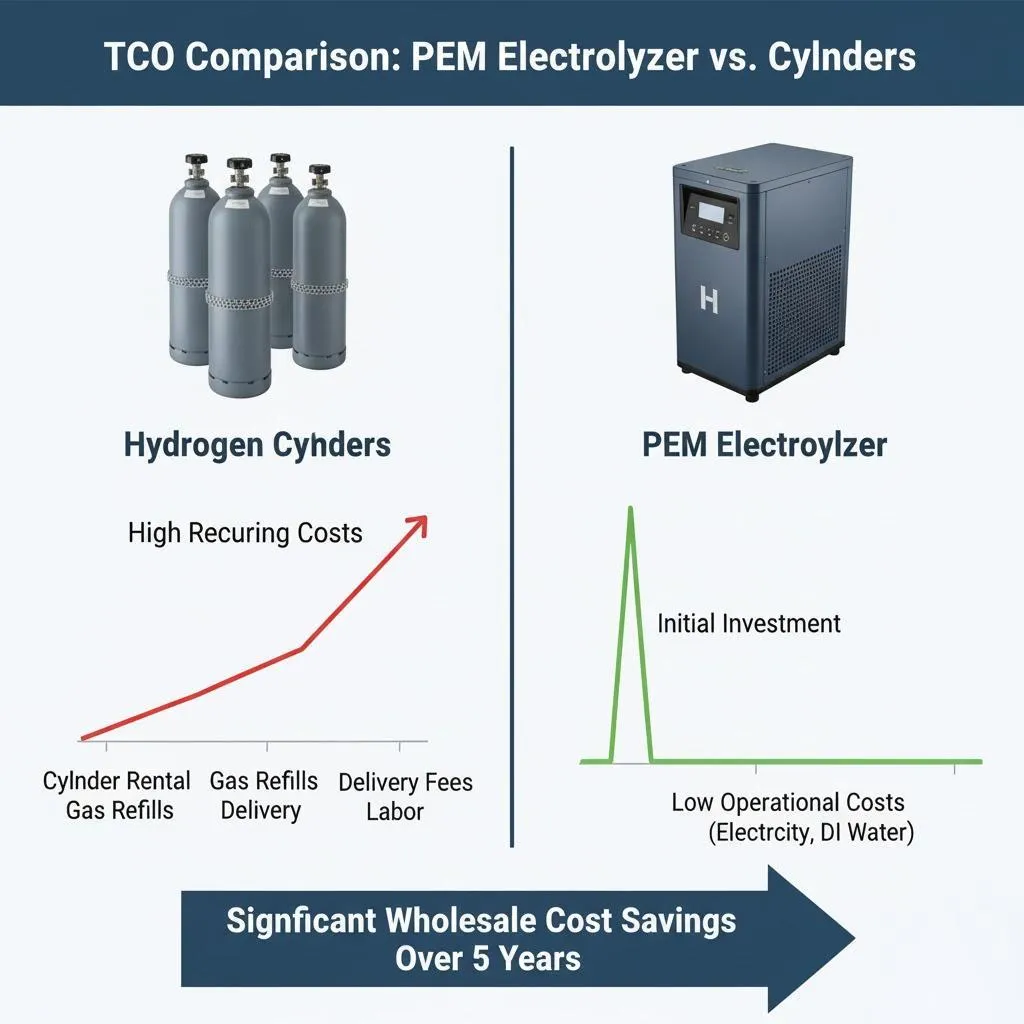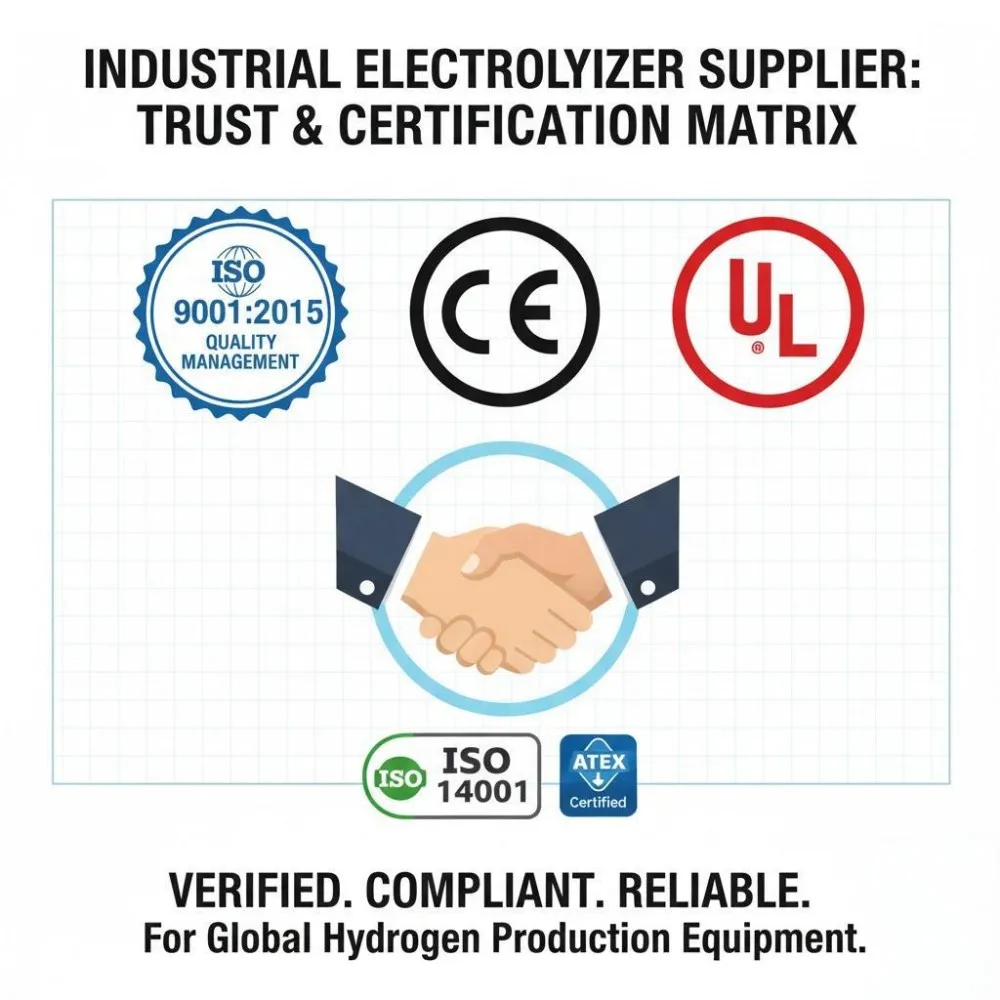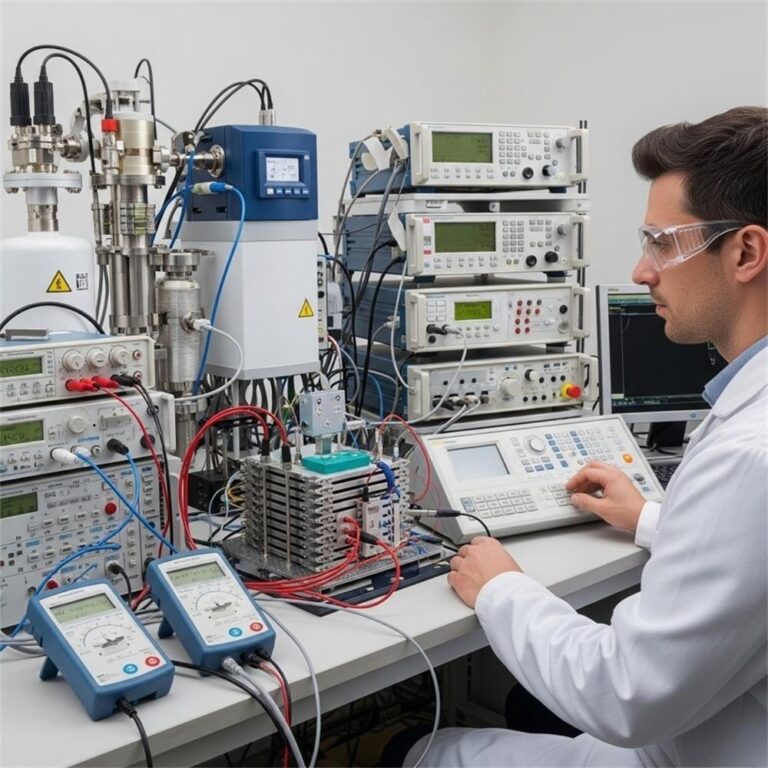Top-Rated PEM Electrolyzer Manufacturer – 2025 Market Insights
Introduction to PEM Electrolyzers
What is a PEM Electrolyzer?
A PEM (Proton Exchange Membrane) Electrolyzer is a high-efficiency device that splits water into hydrogen and oxygen using electricity and a solid polymer electrolyte. Unlike traditional alkaline systems, PEM electrolyzers offer faster response times and higher purity hydrogen, making them ideal for renewable energy integration.
These devices are crucial in enabling a clean, green hydrogen economy. By leveraging renewable electricity—such as solar or wind—PEM electrolyzers produce hydrogen with zero greenhouse gas emissions, thus contributing to decarbonization.
How PEM Electrolyzers Work
The operation of a PEM electrolyzer centers around a stack of cells, where water is introduced at the anode. When electricity is applied:
- Water splits into oxygen (released at the anode) and hydrogen ions.
- These hydrogen ions pass through the proton exchange membrane.
- At the cathode, they recombine with electrons to form pure hydrogen gas.
This process is clean, efficient, and scalable—making it suitable for various industrial, transportation, and energy storage applications.
Importance of PEM Technology in Hydrogen Production
Benefits Over Alkaline Electrolyzers
PEM electrolyzers have surged in popularity due to their superior performance in several areas:
- Compact Design: Smaller footprint for the same output.
- High Purity Hydrogen: Over 99.999% purity levels.
- Quick Start-up Times: Ideal for intermittent renewable energy sources.
- High Current Density: Better suited for large-scale hydrogen production.
These benefits make PEM technology the front-runner in applications requiring clean and fast hydrogen output.
Role in Green Hydrogen Economy
With the global push for net-zero emissions, PEM electrolyzers are vital tools. Governments and companies are investing billions in green hydrogen infrastructure. In this transition, manufacturers of PEM electrolyzers play a critical role by providing scalable, reliable, and eco-friendly solutions.
Key Features of a Reliable PEM Electrolyzer Manufacturer
Quality Standards & Certifications
Quality is paramount when evaluating a PEM electrolyzer manufacturer. Look for certifications such as:
- ISO 22734 – Specific to hydrogen production systems.
- CE Marking – Indicates compliance with EU safety standards.
- ASME & IEC Certifications – For equipment pressure and electrical standards.
Top-tier manufacturers also adhere to rigorous in-house testing and performance benchmarks, ensuring safe and consistent hydrogen output.
Innovation in Membrane Technology
The core of PEM electrolyzers lies in their membrane. Leading manufacturers continuously innovate in:
- Durability and Efficiency of membranes
- Reduced Use of Precious Metals like platinum and iridium
- Recyclability of membrane components
Innovative companies push the boundaries of efficiency and sustainability, setting themselves apart in the competitive landscape.
Global Market Overview of PEM Electrolyzer Manufacturers
Market Trends in 2025
The PEM electrolyzer market in 2025 is experiencing explosive growth, driven by increased investments in green hydrogen, carbon-neutral targets, and government policies worldwide. Key trends include:
- Massive Public Funding: The EU, US, and China have announced multi-billion-dollar hydrogen strategies.
- Corporate Alliances: Strategic partnerships between energy giants and electrolyzer manufacturers are on the rise.
- Gigafactories: Manufacturers are scaling up to meet global demand, with facilities capable of producing gigawatts of electrolyzer capacity annually.
- Technological Integration: AI and IoT are being incorporated to improve system diagnostics and efficiency.
Leading Countries and Exporters
The dominant players in PEM electrolyzer production include:
- Germany and Norway: Leaders in R&D and large-scale production facilities.
- United States: Home to innovators and startup disruptors.
- Japan and South Korea: Focused on compact systems for transportation.
- China: Rapidly scaling up capacity and reducing costs with government support.
Top 10 PEM Electrolyzer Manufacturers in the World
- NEL Hydrogen (Norway)
- Leading global manufacturer with over 90 years of hydrogen experience.
- ITM Power (UK)
- Known for its scalable modular PEM systems.
- Plug Power (USA)
- Pioneering green hydrogen solutions in logistics and transportation.
- Cummins (USA)
- Integrates PEM technology into renewable energy ecosystems.
- Siemens Energy (Germany)
- Offers industrial-scale solutions for green hydrogen production.
- McPhy Energy (France)
- Specializes in mid-size PEM systems with innovative design.
- Hydrogenics (Canada)
- Merged with Cummins; strong portfolio of PEM stacks.
- Enapter (Germany/Thailand)
- Unique AEM hybrid technology merging PEM performance with lower cost.
- H-TEC Systems (Germany)
- Backed by MAN Energy Solutions, focused on large-scale electrolyzers.
- Elogen (France)
- Advanced R&D with a focus on compact, efficient PEM designs.
Comparison Table of Leading PEM Electrolyzer Brands
| Manufacturer | Max Output (MW) | Efficiency (%) | Price Range ($/kW) | Warranty | Unique Feature |
|---|---|---|---|---|---|
| NEL Hydrogen | 20+ | 68–75 | 900–1200 | 5–10 yrs | Modular Design |
| ITM Power | 10–100+ | 75–80 | 950–1300 | 10 yrs | Scalable Modules |
| Plug Power | 5–25 | 70–78 | 850–1100 | 7 yrs | Integrated H2 Infrastructure |
| Siemens Energy | 50–500 | 74–80 | 1100–1500 | 10 yrs | Industrial Scale |
| Cummins | 2.5–20 | 68–72 | 950–1250 | 8 yrs | Advanced AI Monitoring |
How to Choose the Best PEM Electrolyzer Manufacturer
Factors to Consider for Industrial Buyers
- Production Capacity: Can the manufacturer meet your energy or hydrogen demands?
- Customization: Tailored solutions often outperform generic systems.
- After-Sales Service: Support, spare parts availability, and technical assistance matter.
- Global Presence: A worldwide network ensures better logistics and compliance.
Customization Options
Top manufacturers allow for:
- Stack Size Selection
- Control Interface Integration
- Real-Time Monitoring
- Modular Expansion Capabilities
A system tailored to your unique operational environment ensures greater ROI and longevity.
Applications of PEM Electrolyzers
Energy Storage
Hydrogen serves as a long-duration energy storage medium. PEM electrolyzers store excess electricity from solar or wind, converting it into hydrogen that can be used later for grid balancing.
Fuel Cell Vehicles
Hydrogen-powered cars, buses, and trucks rely on high-purity hydrogen, which PEM electrolyzers are ideally suited to produce. With fast refueling and long-range, hydrogen is becoming vital in transportation.
Industrial Use Cases
Industries such as steelmaking, ammonia production, and electronics manufacturing are adopting PEM electrolyzers to decarbonize traditionally emission-heavy processes.
Cost Analysis and ROI of PEM Electrolyzers
Initial Investment vs Long-term Savings
- Capital Cost: Typically $800–$1500 per kW
- Operational Cost: Varies by electricity source; renewables reduce this substantially
- Hydrogen Cost: With subsidies, can go below $2/kg
Break-even is often achieved in 3–5 years depending on scale and incentives.
Grants and Subsidies Available
- U.S. Department of Energy offers funding under the Hydrogen Shot initiative.
- EU Green Deal allocates billions for hydrogen infrastructure.
- Japan’s METI supports hydrogen tech exports.
These programs can significantly reduce the financial barrier for adoption.
Case Studies of Successful PEM Electrolyzer Installations
Case Study: Germany’s Wind-to-Hydrogen Plant
Location: Northern Germany
Manufacturer: Siemens Energy
Capacity: 10 MW
Result: Reduced regional CO₂ emissions by 60%, powered over 3,000 homes with green hydrogen.
Case Study: Plug Power’s Walmart Fleet Integration
Location: USA
Hydrogen used: 40 tons/day
Result: Zero-emission forklifts across major distribution centers.
These examples highlight how scalable and impactful PEM technology can be across sectors.
Environmental Impact of PEM Electrolyzers
Zero Carbon Emission Operations
When powered by renewables, PEM electrolyzers produce hydrogen without emitting any greenhouse gases—supporting a circular economy.
Compliance with Sustainability Goals
Manufacturers often design systems to align with:
- UN SDGs
- ESG Investing Guidelines
- Paris Agreement Compliance
Adopting PEM electrolyzers helps organizations meet CSR and regulatory goals.
Future Trends in PEM Electrolyzer Manufacturing
AI and Automation in Design
Advanced manufacturers are leveraging:
- AI for predictive maintenance
- Robotics for assembly line precision
- Blockchain for supply chain transparency
Next-Gen Materials
Innovations include:
- Non-precious metal catalysts
- Recyclable membranes
- Improved thermal management
These advances aim to reduce costs and increase lifespan, enhancing mass adoption potential.
Challenges Faced by PEM Electrolyzer Manufacturers
Supply Chain Issues
Global shortages of rare metals like iridium affect cost and production timelines.
Electrode and Membrane Costs
R&D is ongoing to develop cost-effective, durable alternatives to current expensive materials.
Despite these challenges, the industry is rapidly innovating and diversifying suppliers.
Regulations and Safety Standards
ISO Standards
Compliance with ISO 22734 and ISO 9001 ensures product safety and performance.
Environmental Compliance
Leading manufacturers also adhere to:
- REACH
- RoHS
- Local emissions standards
Meeting these standards is essential for international trade and installations.
Frequently Asked Questions (FAQs)
1. What is the lifespan of a PEM electrolyzer?
Most high-quality PEM electrolyzers last 7–15 years with regular maintenance.
2. Can PEM electrolyzers run on solar or wind energy?
Yes! They are perfect for intermittent sources due to fast start-up times and efficiency.
3. Is PEM better than alkaline electrolyzers?
For high-purity hydrogen and compact systems, PEM is superior. However, alkaline systems may be cheaper for large volumes.
4. How much hydrogen can a 1 MW PEM electrolyzer produce?
Roughly 20 kg/hour or 480 kg/day, depending on operating conditions.
5. Are there government grants for buying PEM electrolyzers?
Yes, many countries offer incentives under green energy programs.
6. Can PEM electrolyzers be used in homes?
Miniaturized models exist but are not yet widely adopted due to cost and regulatory issues.
Conclusion – The Road Ahead for PEM Electrolyzer Manufacturers
PEM electrolyzers are at the heart of the hydrogen revolution. As manufacturers scale up and innovate, these systems become more efficient, affordable, and accessible. With strong government support, robust R&D, and growing demand, the future for PEM electrolyzer manufacturers looks incredibly bright.
From industrial giants to agile startups, the race to lead in hydrogen tech is on. The winners will not only power our economies but also help save our planet.







